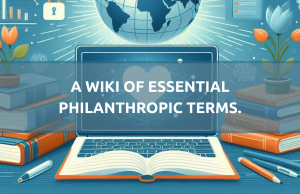Hilary Pearson, former President & CEO of our partner Philanthropic Foundations Canada has written an introduction to and recommendation of our most recent book: Philanthropic Foundations in Canada: Landscapes, Indigenous Perspectives and Pathways To Change, edited by Peter R. Elson, Sylvain A. Lefèvre and Jean-Marc Fontan.
 It’s exciting to welcome a newly published book, one of the first in Canada on the history and work of Canadian grantmaking foundations.
It’s exciting to welcome a newly published book, one of the first in Canada on the history and work of Canadian grantmaking foundations.
Philanthropic Foundations in Canada: Landscapes, Indigenous Perspectives and Pathways To Change, edited by Peter R. Elson, Sylvain A. Lefèvre and Jean-Marc Fontan, and published by PhiLab at the University of Quebec at Montreal, is a valuable set of contributions to our collective understanding of the history, context, work and culture of modern grantmaking foundations in Canada. The contributors are leaders, practitioners, academics and participants in Canadian philanthropy. For the first time, in this volume, we also hear the voices of Indigenous contributors commenting on the characteristics of philanthropy in Canada and in Indigenous-led organizations.
It’s an unusual and original mix of essays written by researchers who have been studying foundations, foundation leaders themselves (former and current), people who run networks for Canadian foundations and leaders from the Indigenous community (full disclosure: I am one of the contributors to the book). The central theme is grantmaking foundations. Specifically, those private or public foundations who do their work primarily through the deployment of financial resources for public (charitable) purposes. This has been an understudied sector. Little is known publicly in any systematic way about Canadian foundations, although we all know the names of large American foundations such as Gates, Ford, Hewlett and Rockefeller. The two major foundation networks, Philanthropic Foundations Canada and Community Foundations Canada, regularly tell stories about the work of individual foundations as a way of illustrating the impact of these foundations in Canadian communities. Foundations themselves tell their stories, particularly those such as community foundations, who actively recruit donors. Yet the evidence has been largely anecdotal. There is now the beginning of a more systematic focus from academic researchers. One prime example is the work of PhiLab, an SSHRC foundation partnership research project that has created a pan-Canadian network of researchers. This book is one result of that work.
What do we learn from this book about Canadian foundations? Here are some of my brief takeaways.
- Many foundations are not simply dispensers of charity but active players in efforts to make our society better (more equitable, more just, safer, more resilient). But, to be an active player, you must also take on responsibility for how you play. As Tim Brodhead, former leader of the McConnell Foundation, summing up the book with his usual eloquence in a closing chapter, notes: “The legitimacy of foundations rests on their ability to balance the discretionary character of private wealth with their public responsibility to contribute to the common good.” (p.317) Tim goes on to say: “Foundations must ensure that their legitimacy as social actors and agents of change is not eroded by a loss of trust…..The credibility foundations are given must be based on their transparency, lack of self-interest and willingness to share their power and collaborate”. (p.320)
- Foundations are best, according to the contributors, when they can bring the values of humility, open-mindedness and respect to the table. They are not the social changemakers themselves but those who help create pathways to change, as allies, advisors and supporters of the changemakers.
- There is great value in collaboration, exchange and learning from and with each other in the foundation world. The work is better when done together, and with many perspectives included or at the table.
- Social change work is often hard and uncomfortable. Foundations need to be prepared for disruption, and to be challenged. We need to accept uncertainty on outcomes while maintaining clarity on purposes.
- Foundations can make a difference to our future. In this pandemic crisis, in my view, that is more relevant than ever. Quoting the prescient Tim Brodhead once again, “philanthropy is most needed when the future is unpredictable, when pressures to address urgent problems absorb most of the available funding, when the insights of the “outliers”, the contrarians, the risk-takers, are essential.”(P.322)
- The words “accountability”, “transparency”, “trust” and “relationship” recur over and over through the individual chapters. Perhaps not what you would expect. But these are thematic threads that weave themselves throughout the book. The intention is to illustrate, with various case studies and discussions of foundation work and experiences, the importance of trust, whether it is public trust in foundations, or foundation trust in grantees, or community trust in funders. As Tim points out, “trust in today’s world is not given; it is earned.”(p.321). So foundations need to work for it. As many are (and many still need to learn).
The editors asked each set of authors to create three takeaways at the end of their chapters, which is an excellent way to guide readers through key points in each chapter. Here are my three takeaways of advice addressed to foundations and gleaned from reading the whole book:
- To be seen as legitimate, you must be accountable
- To be trusted, you must be transparent
- To be effective, you must be in relationship.
A book to stimulate much reflection. Well worth a read!



